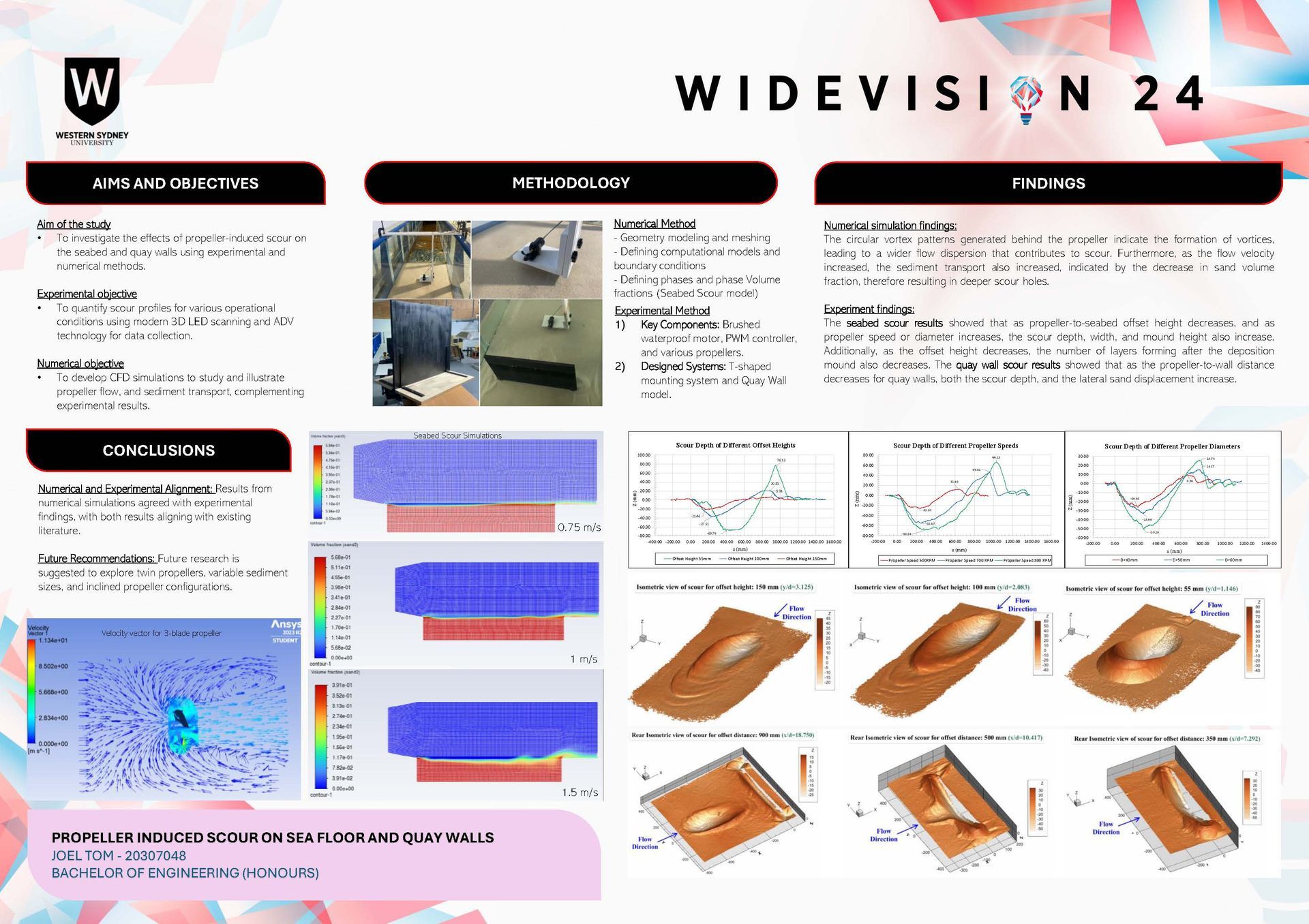From an early age, my interest in mechanical systems was sparked by a strong curiosity for how everyday objects functioned. Growing up, this curiosity evolved into a strong passion for engineering, particularly the idea of solving challenging problems.
Throughout my studies at Western Sydney University, I have developed a strong passion and foundation in areas such as mechanical design, automated manufacturing, and computational fluid dynamics. My academic experiences have sharpened my analytical skills and deepened my understanding of engineering principles, driving me to approach complex challenges with innovative and practical solutions.
Looking ahead, I am committed to refining my expertise and contributing meaningfully to the field of mechanical engineering.
Joel Tom
Propeller Induced Scour On Seabed And Quay Walls
PROJECT
The project investigates the effects of propeller-induced scour on seafloor environments, particularly near quay walls and harbour structures. Propeller scour is a critical issue that can lead to significant erosion of the seabed, posing risks to structural foundations and overall marine ecosystem health. To investigate this phenomenon, an ANSYS workbench was used to simulate the propeller flow and seabed scour. Moreover, a comprehensive experimental setup was developed using a large laboratory water flume with a Wageningen B-series propeller, driven by a JMT QX-Brushed motor.
Through both physical testing and computational modelling, the project explores the varying effects of different propeller configurations, including blade numbers, propeller diameter, rotational speeds, and offset heights between the propeller and the seabed. Data collected from experiments included capturing the scour profiles and scour depth using a 3D laser scanner, as well as the flow velocity measurements using Acoustic Doppler Velocimeters (ADV). Together with simulation results, it will offer a vision into the extent and patterns of seabed erosion.
The experimental results confirmed an inverse relationship between propeller-to-seabed offset height and scour depth. At the lowest offset (55 mm), the deepest scour of 66.47 mm was observed with significant sediment displacement within 20 minutes, while at the highest offset (150 mm), the scour depth measured at 25.31 mm after 30 minutes. Numerically, the velocity vector graphs showed vortex patterns, with flow velocities reaching 2.6 m/s for the 4-blade propeller, and 2.4m/s for the 3-blade propeller. The wall shear stress analysis indicated higher stress in the 4-blade propeller (469 Pa), when compared to the 3-blade reaching a maximum of 447 Pa.
This study has practical implications for the design and operation of marine vessels and harbour infrastructure, offering essential knowledge into reducing the negative impacts of propeller scour. The findings could lead to better design strategies that enhance marine sustainability and safety in high-traffic harbour areas.

With respect for Aboriginal cultural protocol and out of recognition that its campuses occupy their traditional lands, Western Sydney University acknowledges the Darug, Eora, Dharawal (also referred to as Tharawal) and Wiradjuri peoples and thanks them for their support of its work in their lands in Greater Western Sydney and beyond.
Acknowledgement of Country
Western Sydney University Copyright © 2004-2024 | ABN 53 014 069 881 | CRICOS Provider No: 00917K | TEQSA Provider ID: PRV12061 (Australian University)

